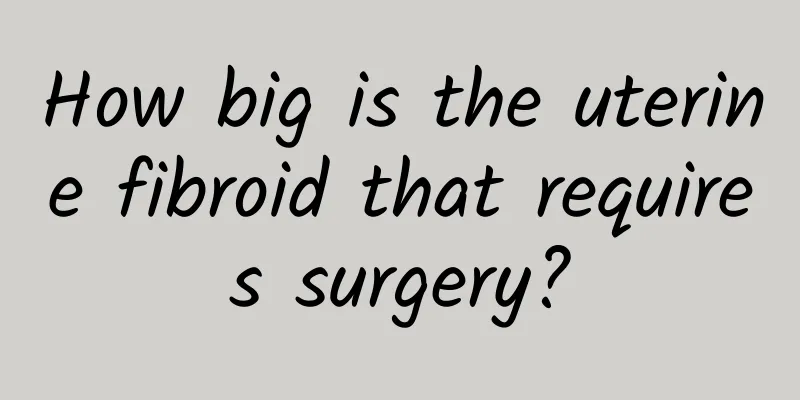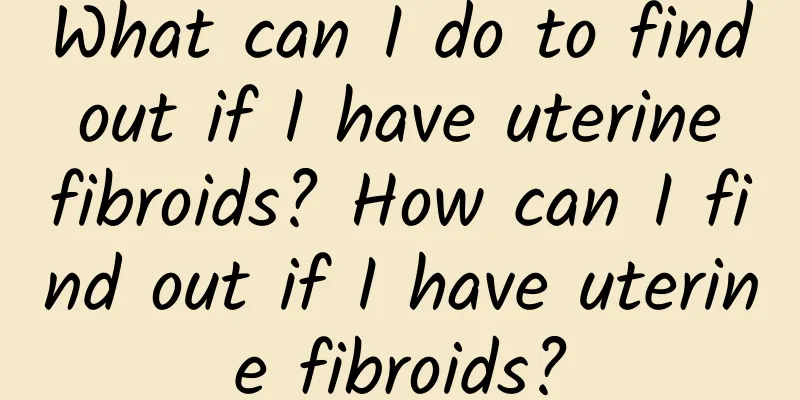How big is the uterine fibroid that requires surgery?

|
How big a uterine fibroid needs surgery? Experts say: Uterine fibroids are the most common benign tumors in women, formed by the proliferation of smooth muscle cells in the uterus. Generally, it is not recommended to remove the entire uterus of a woman. It is only necessary to remove the part where the fibroid grows to effectively prevent recurrence. If the uterine fibroids grow between the uterine muscle wall and the uterine serosa, and are less than 3 cm in size, then surgical removal is not necessary. However, living with the tumor still has certain risks and requires close follow-up. However, if the uterine fibroids are larger than 3 cm and have a rich blood supply, surgery should be performed as soon as possible. If there are multiple uterine fibroids, generally within 3 and the largest is less than 5 cm, laparoscopic surgery can be performed. Experts remind that if uterine fibroids have the following conditions, surgery is required no matter how big they are: 1. There are discomfort symptoms that affect the patient's life, such as anemia, frequent urination, abdominal distension, etc. 2. Uterine fibroids cannot be distinguished from ovarian tumors. 3. Uterine fibroids grow rapidly in a short period of time, and malignant transformation cannot be ruled out. 4. Myomas in the cervix and submucosal fibroids are myomas that grow into the uterine cavity. 5. Myomas in the uterine corners compress the entrance of the fallopian tubes, hindering conception. In addition, myoma patients often have ovarian dysfunction, leading to infertility. Uterine myomas deform the uterus and hinder the implantation of fertilized eggs. They can also affect the proliferation of the endometrium. Even if the embryo implants, the presence of myomas can easily cause miscarriage. If women with uterine myomas are infertile and all other examinations are normal, the cause of infertility may be uterine myomas. If myomas are suspected to cause infertility, surgery should be performed in a timely manner. 6. Uterine fibroids combined with infertility. 7. Due to uterine fibroids, patients have heavy menstrual flow and long menstrual periods. Long-term excessive menstrual blood loss can lead to secondary anemia and even anemic heart disease. In severe cases, symptoms such as general fatigue, pale complexion, shortness of breath, and palpitations may occur, which may be life-threatening. |
<<: How does pelvic inflammatory disease develop?
>>: Can a small amount of pelvic effusion heal itself? How to treat pelvic effusion?
Recommend
Will there be uterine adhesion if the uterus has uniform echo?
Will there be uterine adhesion if the uterus has ...
What are the symptoms of cervical hypertrophy?
Cervical hypertrophy is not unfamiliar to female ...
Pursuing pure food? No matter how obsessed you are, it won't make a healthy, non-dieting life better.
Purity does not exist When I was fourteen, I was ...
8-minute workout to create a perfect abdominal line
[Key Points]: Summer is the season to show off yo...
Eating sandwiches for breakfast is nutritious and healthy! Add 5 weight-loss-promoting fillings, so you won’t get fat after eating
It is a common habit for people to eat sandwiches...
Can beautiful leg socks reduce edema? Note on how to use
Days when your legs feel swollen and heavy after ...
Western medicine treatment of infection after artificial abortion
Abortion is a last resort for women to take when ...
What to do when applying a facial mask? Teach you how to do small exercises
It must be hard to exercise every day! As long as...
What is the most effective medicine for multiple uterine fibroids?
What is the most effective medicine for multiple ...
Three causes of vulvar leukoplakia you need to know
Three causes of vulvar leukoplakia should be unde...
Can women with chronic cervicitis have medical abortion? Precautions for medical abortion of chronic cervicitis in women
Patients with chronic cervicitis can generally ha...
What should you pay attention to in order to completely cure candidal vaginitis?
Candidal vaginitis is a common gynecological infl...
More exercise can prevent endometriosis
We all know that endometriosis is a disease that ...
How to remedy headache after abortion? 5 nursing measures to be taken after abortion
Because people nowadays have early sexual maturit...
Is it expensive to treat functional uterine bleeding?
Functional uterine bleeding is very harmful in li...









